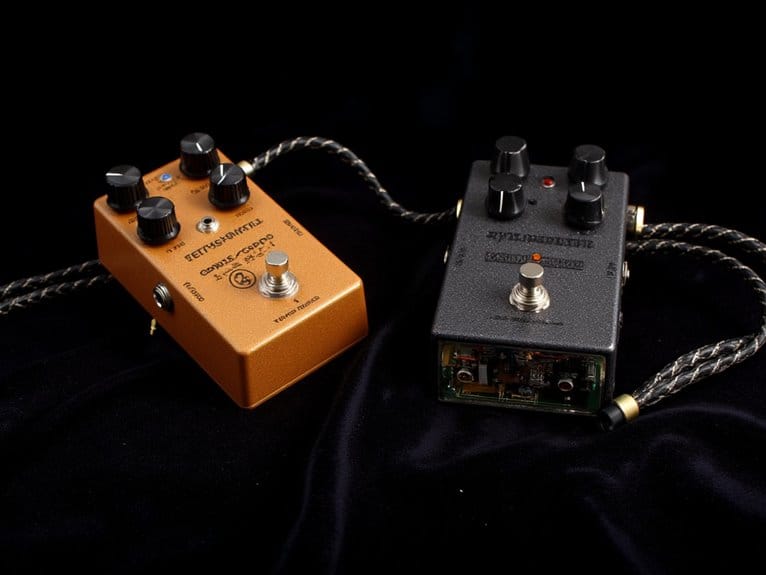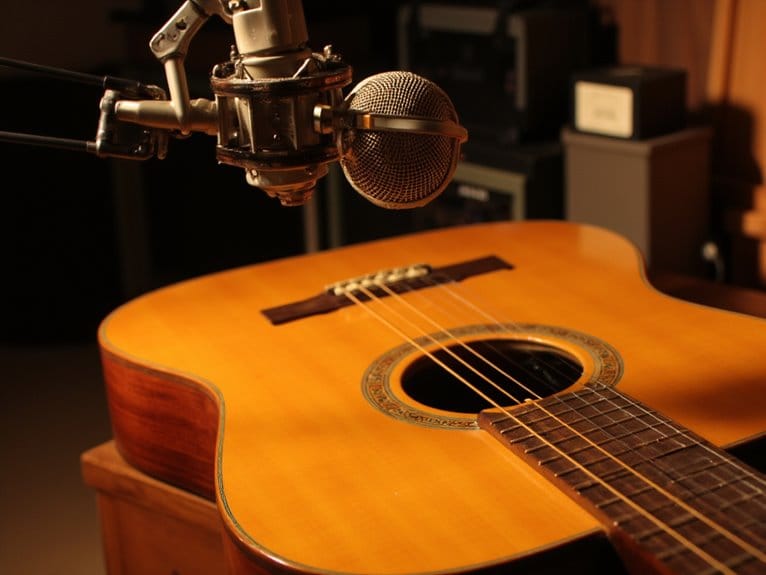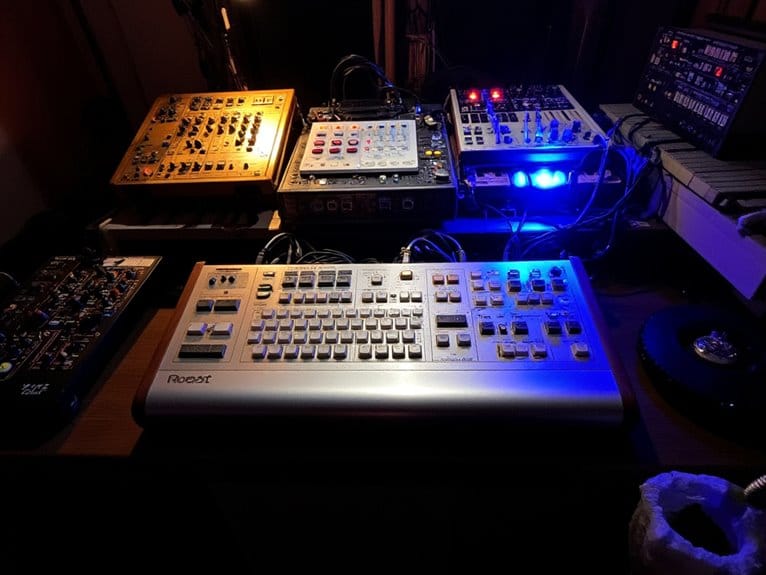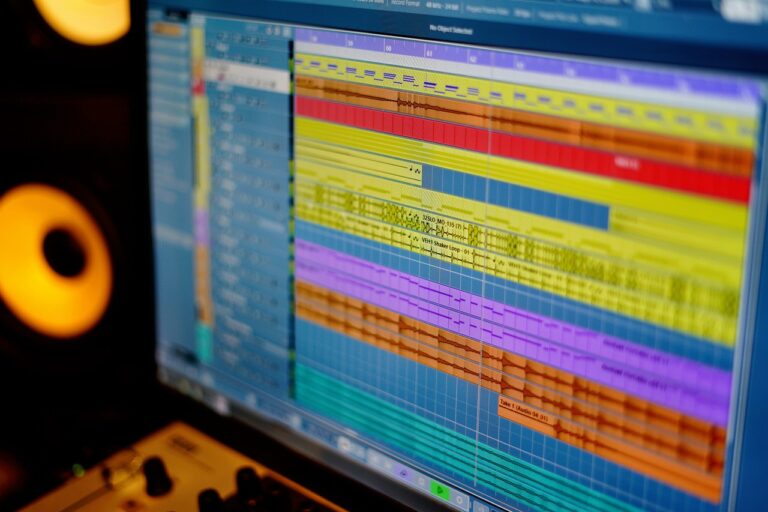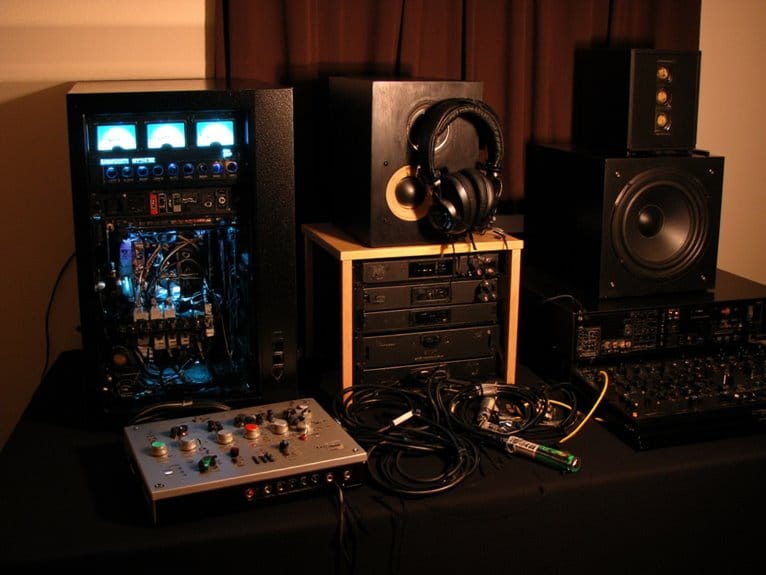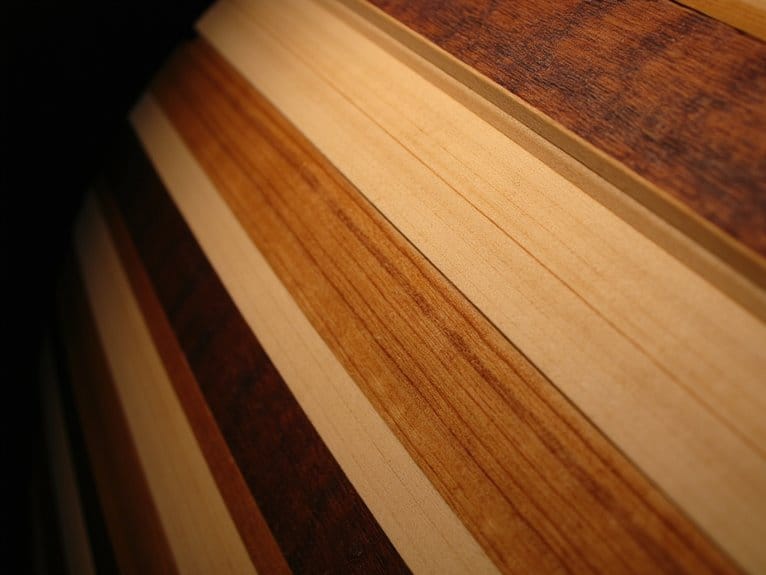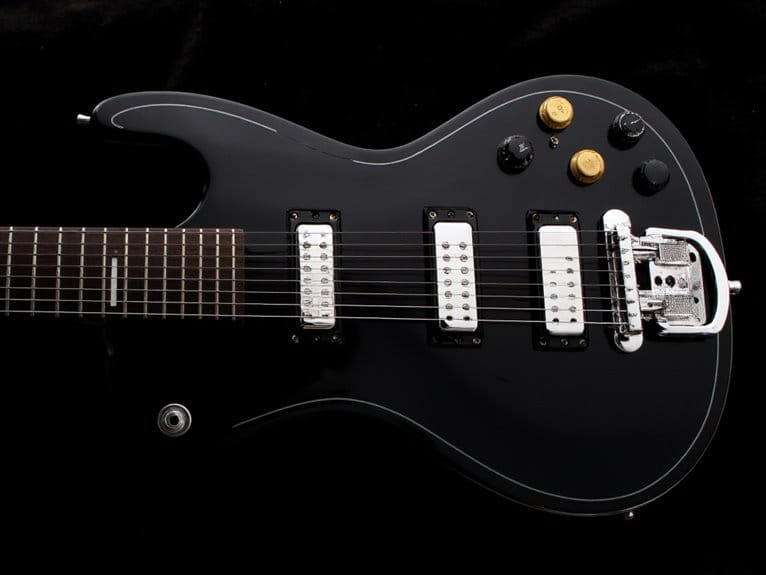True Bypass vs. Buffered Bypass in Pedals
True bypass pedals route your guitar signal directly from input to output when disengaged, preserving tonal integrity but struggling with impedance matching over longer cable runs. Buffered bypass maintains active components that provide excellent noise reduction and signal strength, though they may introduce subtle coloration. You’ll find true bypass ideal for minimalist rigs prioritizing unaltered tone, while buffered circuits excel in complex multi-pedal configurations where signal degradation becomes problematic, and understanding these distinctions helps optimize your entire setup’s performance.
We are supported by our audience. When you purchase through links on our site, we may earn an affiliate commission, at no extra cost for you. Learn more.
Notable Insights
- True bypass routes guitar signal directly from input to output when disengaged, preserving unaltered tone.
- Buffered bypass maintains active components in signal chain, providing impedance matching and signal strength enhancement.
- True bypass excels in minimalist rigs but struggles with signal degradation over longer cable runs.
- Buffered bypass offers superior noise reduction and supports complex multi-pedal configurations more effectively.
- Neither system is universally superior; optimal choice depends on pedalboard size, cable length, and setup complexity.
Understanding Signal Path Technology and Circuit Design
The heart of any effects pedal lies in its signal path design, which determines how your guitar’s electrical signal travels through the circuitry when the pedal is engaged or bypassed.
When you’re considering pedals, you’ll encounter two primary approaches: true bypass and buffered bypass systems, each handling signal integrity differently through distinct circuit architectures.
True bypass pedals use mechanical switching to route your guitar signal directly from input to output when disengaged, completely removing the pedal’s circuitry from the path and preserving your original tone characteristics.
Buffered bypass designs, however, maintain active components in the signal chain at all times, utilizing high-input-impedance amplifiers for impedance matching that converts your guitar’s high-impedance output to a more robust low-impedance signal for improved drive capability.
Comparing Performance Benefits and Limitations
When you’re weighing the pros and cons of true bypass versus buffered bypass systems, I’ve found that each approach delivers distinct performance characteristics that’ll considerably impact your overall tone and signal integrity depending on your specific setup.
True bypass pedal types excel at preserving tonal integrity by eliminating circuit interaction when disengaged, offering superior tone preservation for minimalist rigs. However, they struggle with impedance matching across longer cable runs, creating noticeable signal strength degradation.
True bypass eliminates unwanted circuit interference for pristine tone but suffers from signal loss over longer cable distances.
Buffered bypass systems provide excellent noise reduction and maintain robust signal strength through active impedance matching, though some circuits introduce subtle coloration during pedal switching.
Consider these performance factors:
- Cable length tolerance – buffered systems handle extended runs better
- Signal transparency – true bypass maintains purer signal paths
- Power dependency – true bypass continues functioning without electricity
- Chain complexity – buffers optimize multi-pedal configurations
Optimal Pedalboard Configuration Strategies
Beyond selecting the right bypass system for your pedals, I’ve learned that strategic pedalboard configuration can make or break your overall performance experience, requiring careful attention to signal flow, physical ergonomics, and practical accessibility.
Your pedal placement should prioritize signal integrity by positioning tuners first, followed by dynamic effects, gain stages, modulation, and time-based effects in that specific order.
I’ve found that accessibility factors become vital during live performances, so place frequently used pedals near the front where your foot can reach them easily.
Proper pedal spacing allows for comfortable switching while preventing accidental activation of neighboring effects.
Use isolated power supplies to maintain clean signal paths, and arrange pedals right-to-left to align with natural cable flow patterns for best performance results.
Professional audio mixers provide multiple XLR inputs for connecting various microphones and instruments simultaneously, which can be especially useful when incorporating external effects processors into your pedalboard setup. These mixers also offer advanced routing options, allowing for greater flexibility in sound design and control. For those looking to enhance their mixing techniques, understanding effects loops in mixing is crucial, as it allows you to place effects in the signal chain for more dynamic sound manipulation. This capability can elevate the quality of your recordings and performances, providing a more polished and professional output.
Volume pedals work exceptionally well when positioned after gain stages but before modulation effects, allowing for smooth volume swells without compromising your core tone or affecting delay and reverb trails. This positioning ensures that you maintain the integrity of your sound while crafting dynamic performances. Additionally, when paired with the best overdrive pedal of all time, the volume pedal can enhance expressiveness, allowing subtle nuances in your playing to shine through. Experimenting with this setup can lead to a richer, more engaging sonic experience.
Debunking Myths and Making Informed Choices
How often have guitarists fallen victim to the persistent myths surrounding bypass systems, making pedal choices based on oversimplified assumptions rather than understanding the nuanced reality of signal processing?
I’ve witnessed countless players dismiss buffered bypass entirely, believing common myths that true bypass always sounds better. The reality demands more informed choices based on your specific setup, cable lengths, and signal chain requirements.
Consider these scenarios where conventional wisdom fails:
- The bedroom player with a 20-foot pedalboard setup – True bypass might actually hurt your tone through cable capacitance.
- The studio musician using vintage-style pedals – Buffered circuits can maintain signal integrity better than expected.
- The touring guitarist with complex switching systems – Strategic buffer placement often outperforms all-true-bypass configurations.
- The high-gain player experiencing switching pops – Buffered designs eliminate those annoying transient noises.
Smart pedal selection combines both technologies strategically.
On a final note
You’ll find that neither true bypass nor buffered bypass is inherently superior, since each serves specific purposes within your signal chain’s architecture. If you’re running a simple setup with quality cables under twenty feet, true bypass pedals will preserve your guitar’s natural tone characteristics. However, when you’re managing longer cable runs, multiple pedals, or high-capacitance environments, buffered bypass becomes essential for maintaining signal integrity and preventing high-frequency loss throughout your pedalboard configuration.

